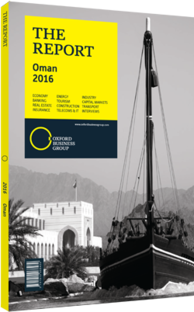Oman's vast solar power potential put to use
In late 2015 in the desert of southern Oman, work is due to start on a $600m solar plant capable of producing a peak output of 1 GW of thermal energy. By comparison, the current largest photovoltaic (PV) solar plant in the world – the Solar Star project in California – produces 579 MW, or a little over half as much energy as the plant being developed in Oman.
Solar For Steam
Oman’s Miraah project – to be built by Glasspoint Solar for Petroleum Development Oman – will not produce power for the grid but rather steam to be used in enhanced oil recovery at the Amal oilfield. By contrast, Oman’s first solar PV facility for power generation, a $1m project due to begin operation in September 2015 in Dhofar, will have a daily production capacity of 1667 KWh, and will service the Rural Areas Electric Company, rather than the larger main interconnected system.
The disparity between the two projects would seem to represent a paradox: why invest huge sums in producing solar energy, only to use that energy to release less-efficient hydrocarbons? Such a paradox however fails to take into account the full reality of energy economics: the steam produced by the Miraah project will save 5.6trn British thermal units (Btu) of natural gas each year, which would otherwise have been injected into the Amal oilfield to recover crude oil. With natural gas currently priced at $3 per million Btu in Oman (and higher in some liquefied natural gas export markets), the Miraah project will thus save an estimated $17m in opportunity costs for each year that it is in operation. Ahmed Al Subhi, CEO of ACWA Power Barka, told OBG, “Long term, introducing renewable energies is the only solution to insure the sustainability of the sector and to help wean the country off of subsidies.”
Such are the economic facts of a hydrocarbons economy, and it is against such realities that renewable energies will have to stake their claim if they are to find a place in Oman’s energy market. Fortunately, there are several advantages that recommend solar in particular. First, solar energy in Oman is almost constant the whole year round, meaning that the country receives almost as much sun in December as it does in June. Second, the price of PV cells has fallen by a factor of four in the past decade. As a result, solar power generated in Germany is now competitive with new coal and gas-fired plants on a direct cost basis, at less than $0.09 per KWh, against $0.05-0.10/KWh.
Economic Incentive
In 2014 the total underlying cost of generating electricity in MIS was calculated by the AER as being OR0.025 ($0.064) per KWh. Since then the authorities have doubled the wholesale cost of natural gas, from $1.5m Btu to $3m Btu. The effect of this change has been to increase the total underlying cost per KWh of gas-based power generation to an estimated OR0.032 ($0.083) per KWh – a level at which renewables may begin to be competitive in their own right, hence precluding the need for a German-style feed-in tariff (which the AER does not favour). With the economic case for renewables now much firmer, the key remaining incentive for the industry will be a clear policy lead from the government. As a result, in 2014 renewables were factored in to the OPWP’s seven-year statement (covering the period through 2020), with 200 MW of solar power expected to be procured for the MIS by 2018. Nonetheless, a recent review of renewables potential in Oman by the International Renewable Energy Agency identified the building of an efficient policy and regulatory framework for renewables as a key priority.
Paradoxically, solar PV does not work well in the heat, and at temperatures above 80° C, PV cells stop working entirely. Dust is also a major problem, and in the case of the Miraah project has necessitated the construction of greenhouses to cover the mirror units. As technological solutions improve however, the cost of solar power, coupled with its obvious benefits, should make it an increasingly attractive option.
You have reached the limit of premium articles you can view for free.
Choose from the options below to purchase print or digital editions of our Reports. You can also purchase a website subscription giving you unlimited access to all of our Reports online for 12 months.
If you have already purchased this Report or have a website subscription, please login to continue.

